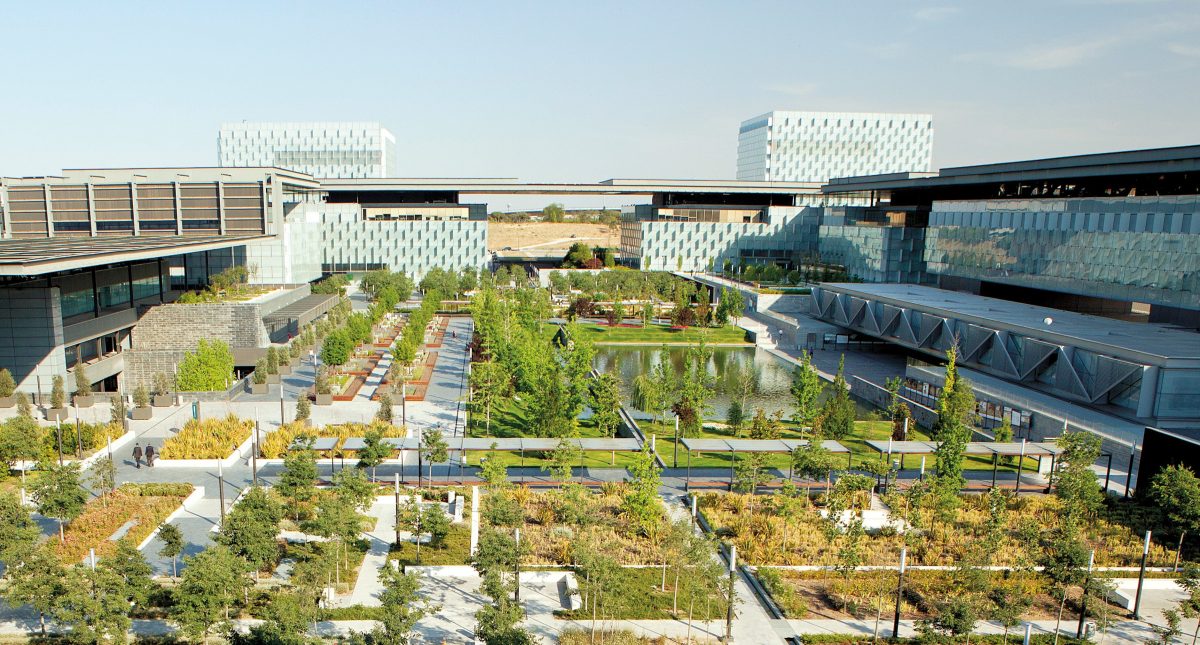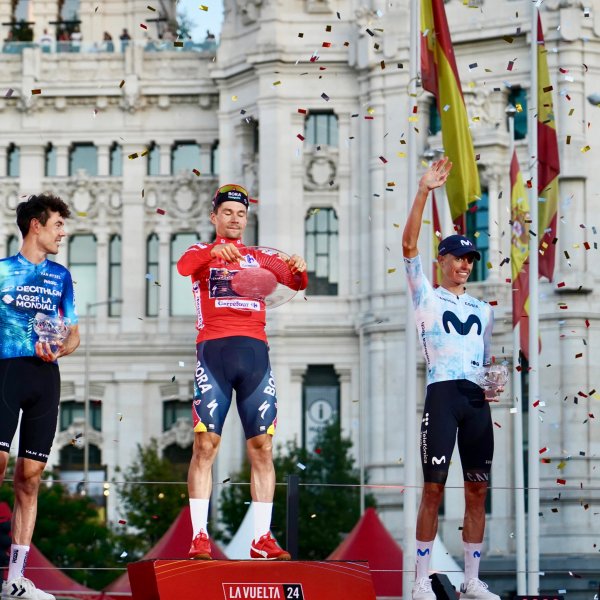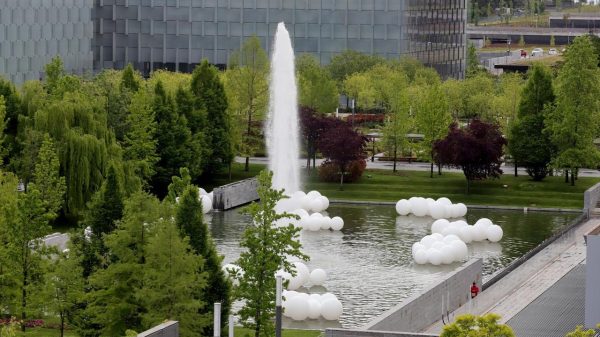This complex is known worldwide as a large Innovation and Talent Hub, an open space where the solutions of the future in 5G, IoT, edge computing, artificial intelligence, virtual and augmented reality, TV, etc. can be tested, experimented and developed. In addition, it is also home to our renowned corporate university Universitas and our famous Campus 42, considered one of the most innovative programming campuses in the world.
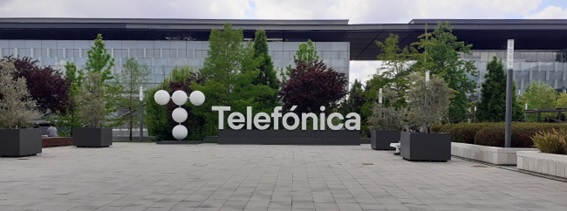
But it is also a work centre for many telephonists, as is my case, and a natural environment with a wide biodiversity where we can enjoy and observe various species of fauna and flora.
Location and history
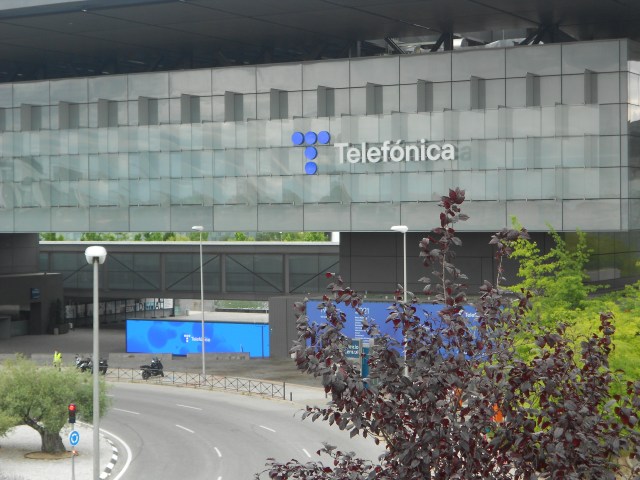
Distrito Telefónica is located in the north of Madrid in the Las Tablas district of Madrid, with a metro stop on line 10: “Ronda de la Comunicación”.
Designed by the famous architect Rafael de la Hoz, it was built between 2004 and 2008 and resembles a large castle or fortress with four corners following the orientation of the cardinal points with a large courtyard and a pond in the centre.
The gardens were designed and planned by James Braybrook, based on different principles that try to interpret concepts related to Telefónica’s corporate identity. Together with these principles, the different references to traditional gardens in Spain are mixed with the use of the conditions of each environment: hours and incidence of sunlight, air flows, water currents and vegetation suitable for each of the spaces designed.
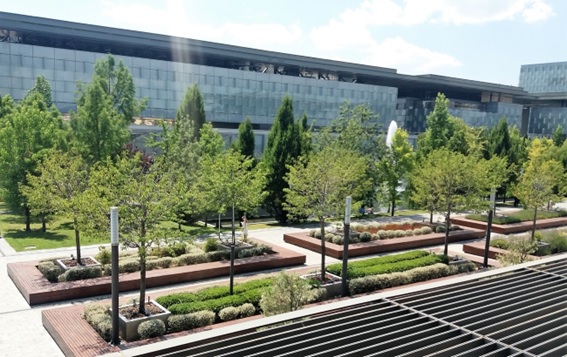
Distribution
The data from the technical sheet of the global Telefónica District project lead us to the following figures:
- Surface area 168.500m2 of land
- Surface area 118.550m2 of landscaping
- Surface area 60.900m2 of green areas
- Surface area 48.150m2 of hard surfaces
- Surface area 9.500m2 of water surfaces
All these m2 are distributed as follows:
Four squares called the Gardens of Diversity, located at the four cardinal points: North Square, East Square, South Square and West Square. Each square provides access to the main buildings located there, as well as to the central square. Because each square has a different geographical orientation, there are different environmental conditions and this allows us to observe a variety of flora in each one.
The importance of water
Water is the common element not only in all the squares but also in the rest of the complex.
A large central square called Parque de las Comunicaciones where the lake is located.
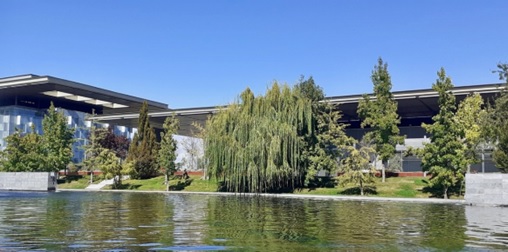
There are two large separate areas, to the north and south, with paths leading to rest areas. In addition, there are stairs around the pond, like a terrace, from which there is a beautiful view of the large central water fountain.
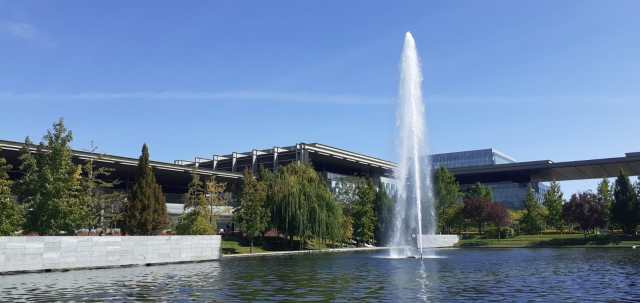
Two terraced garden areas called Jardines de los Caños. The water that reaches the central lake comes from two pipes in these gardens.
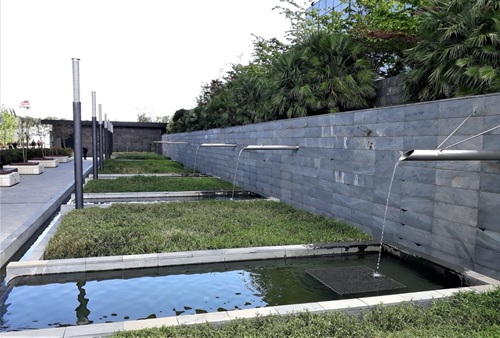
Two areas called Miradores de Magnolios: these viewpoints are located in the west and south areas. They allow us to observe from a higher position another beautiful view of the complex and especially of the Parque de las Comunicaciones.
An exterior ring of vegetation that gives continuity to the entire perimeter of the complex.
Distrito Telefónica is a complex that is accessible to anyone who wants to visit it, thus reinforcing Telefónica’s hallmark of being a close and open company.
My humble intention with these blog entries will be to describe the biodiversity of flora and fauna in the Telephone District. Over the years I have been able to observe and catalogue various species of trees, shrubs and wild flowers. Among the different types of animals that can be seen there are reptiles, snails, a multitude of insects, birds and, of course, mammals…and not only homo sapiens with or without smartphones.
I hope I can generate curiosity so that you will come and see it if you haven’t already and enjoy it as I do every day.
